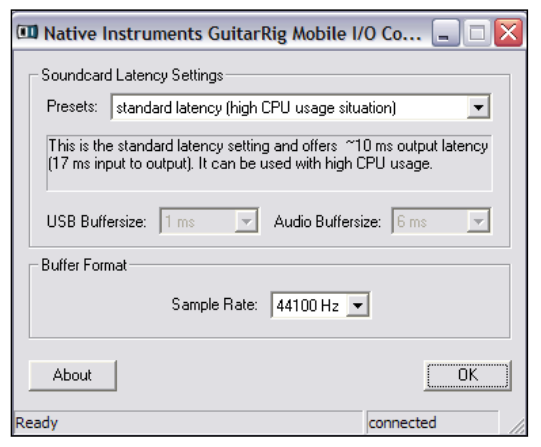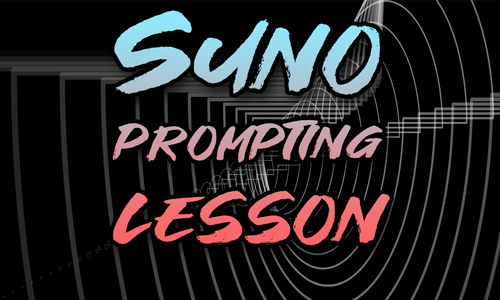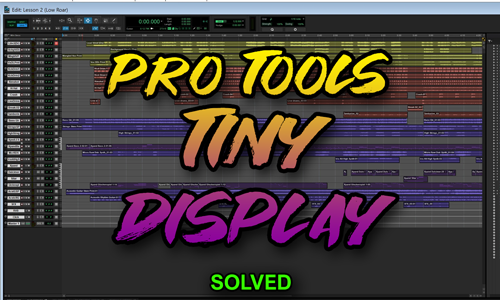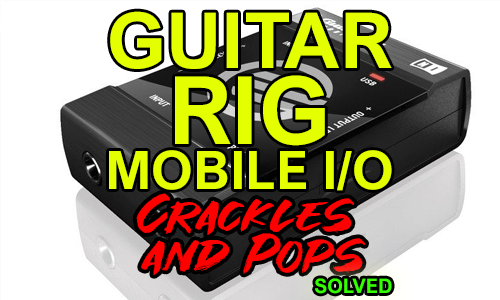Hi Audio Support
I’ve just installed Cubase 8 onto my Thinkpad P53s. I’m having a lot of popping and cracking when playing my guitar, also latency issues…
Dan
I received the above message via my website enquiry form and I arranged a time to connect with Dan later that day.
Once the client and I were speaking on the phone and I had his screen open in front of me via Anydesk I looked through his Cubase Device Setup window to see the settings. I saw that he was using the Steinberg Generic Low Latency ASIO Driver and this was likely to be the cause of his problem. We closed Cubase and opened a web browser on his computer.
He wanted to record his guitar via his audio interface, a Guitar Rig Mobile I/O. So we navigated to the Native Instruments website and downloaded the correct Windows driver for that product. We installed the driver, re-opened Cubase and the Device Setup Menu and changed the ASIO Driver to use the Guitar Rig.
Then we recorded 30 seconds of his guitar into Cubase and listened back to the results. The client was happy as the recorded guitar sound was vastly improved. There were still a few pops however so I showed my client how he could change the latency using the buffer size settings. We raised the latency value slightly and ran a few more tests. By the third test we had found the correct latency for his system and all the pops and crackles were gone.
Cubase Latency Settings

I explained that the latency settings might need to change based on different situations. When my client is recording his guitar, he will want to use a low latency setting to hear his guitar instantly as he plays it. However, this setting uses more system resources, so won’t work well if he also has a lot of plugins running in his Cubase Project. When he comes to mix a track and wants to add reverbs and other effects, he will need to raise the latency value to give the CPU more time to process the sounds. If he uses a low latency value when mixing with lots of plugins, he will likely get pops and clicks.
Once we had the audio running correctly through his system, we used the rest of the hour to answer some other questions my client had about music technology. He wanted some drum loops to record his guitar over, so I showed him how he could get started by downloading some free loops available at MusicRadar. We also looked at how to import those loops into Cubase, change the tempo of Cubase to match the speed of the loops and how to repeat the loops through the length of a song.
I showed him how he could use Track Presets in Cubase to easily add effects to his guitar recordings.
We had a chat about his monitoring setup and I made some recommendations for small active monitors and the right kinds of cable needed to connect his audio interface to the monitors.
At the end of the session, the client was happy to now have his Cubase system working properly and be able to get on with recording his guitar. He was kind enough to write me a nice review:

Recent Reviews
Let’s Get Your System Running Smoothly.
No automated tickets, no waiting queues — just one-to-one help from an experienced music technology specialist. I’ll connect to your system remotely, identify the issue, and guide you through the fix.
I usually reply to enquiries within a few hours during UK weekday daytime.
Once you make an enquiry, I’ll read it personally and reply with initial advice or a link to book a remote session if needed.
For booked sessions, you’ll receive a secure AnyDesk link and we’ll talk via WhatsApp or voice chat. Sessions last up to an hour — long enough to diagnose the cause and apply a practical fix.
Make an Enquiry
I’ll reply personally as soon as I can — usually within a few hours during UK daytime.
Book Your Session Securely Online
You can book your Audio Support session instantly using the secure form below.
Choose a time that suits you — I’ll confirm by email and send remote-access details before your appointment.

Outside the UK? Use the Timezone icon to book in your local time.
- 💳 Session fee: £90 per hour (UK Pound Sterling)
- ⏱️ Availability: Usually within 1–2 days.
- 🗓️ Duration: Each session lasts one hour.
- 🔁 Rescheduling: Sessions can be moved up to 24 hours in advance.
- 🔒 Security: Remote access is one-time only and closes automatically when the session ends.
- 🌍 Timezone: Default times shown are UK (GMT/BST). Use the timezone Icon to set to your local time
You don’t have to keep guessing what’s wrong — I’ll help you find the cause and fix it, so you can get back to making music.
More Case Studies
Recent problems solved for real clients.
AI as a Creative Partner: A Case Study on Using Suno with Cubase
23 November 2025

Client’s Question
How can I use Suno AI with my own acapella from Cubase?
Session Result
Created a custom, AI-generated backing track in Suno from a Cubase vocal export.
Read Full Case Study Report: AI as a Creative Partner: A Case Study on Using Suno with CubasePro Tools Display Scaling Fix on Windows 10/11
23 November 2025

Client’s Question
Why is Pro Tools tiny on my new 4K monitor?
Session Result
Pro Tools display scaling fixed using Windows compatibility override.
Read Full Case Study Report: Pro Tools Display Scaling Fix on Windows 10/11MicroKorg MIDI Sync and Setup Issues in Logic Pro
20 November 2025

Client’s Question
MicroKorg arpeggiator not syncing to Logic Pro tempo
Session Result
Diagnosis confirmed potential hardware or cable fault; alternative routing proposed.
Read Full Case Study Report: MicroKorg MIDI Sync and Setup Issues in Logic Pro
Client’s Question
Can I book an expert to remotely fix my Logic Pro problems?
Session Result
Yes! Audio Support provides remote troubleshooting services. Here are 5 examples showcasing our work.
Read Full Case Study Report: 5 Logic Pro Problems FIXED: Expert Remote Troubleshooting Case Studies